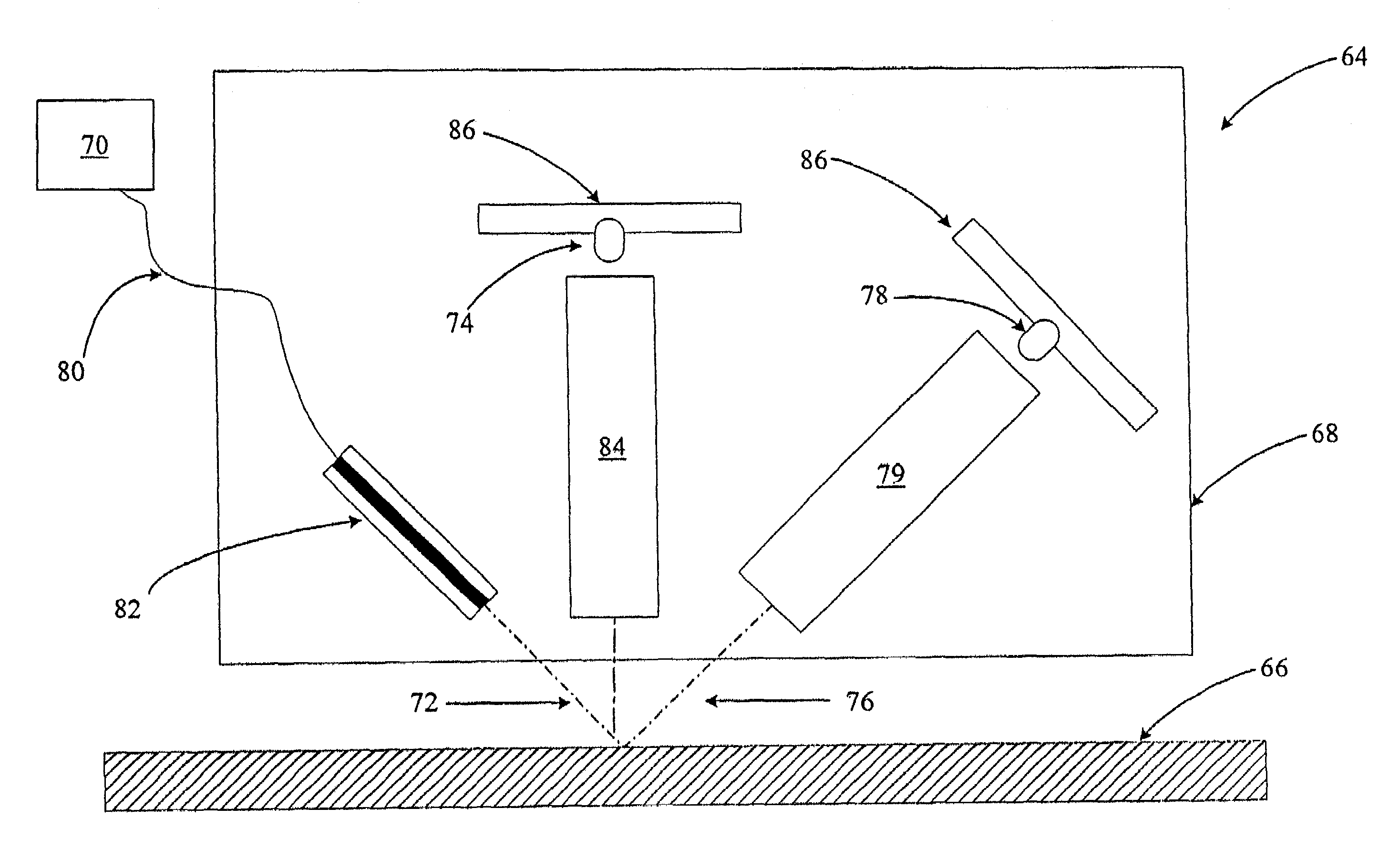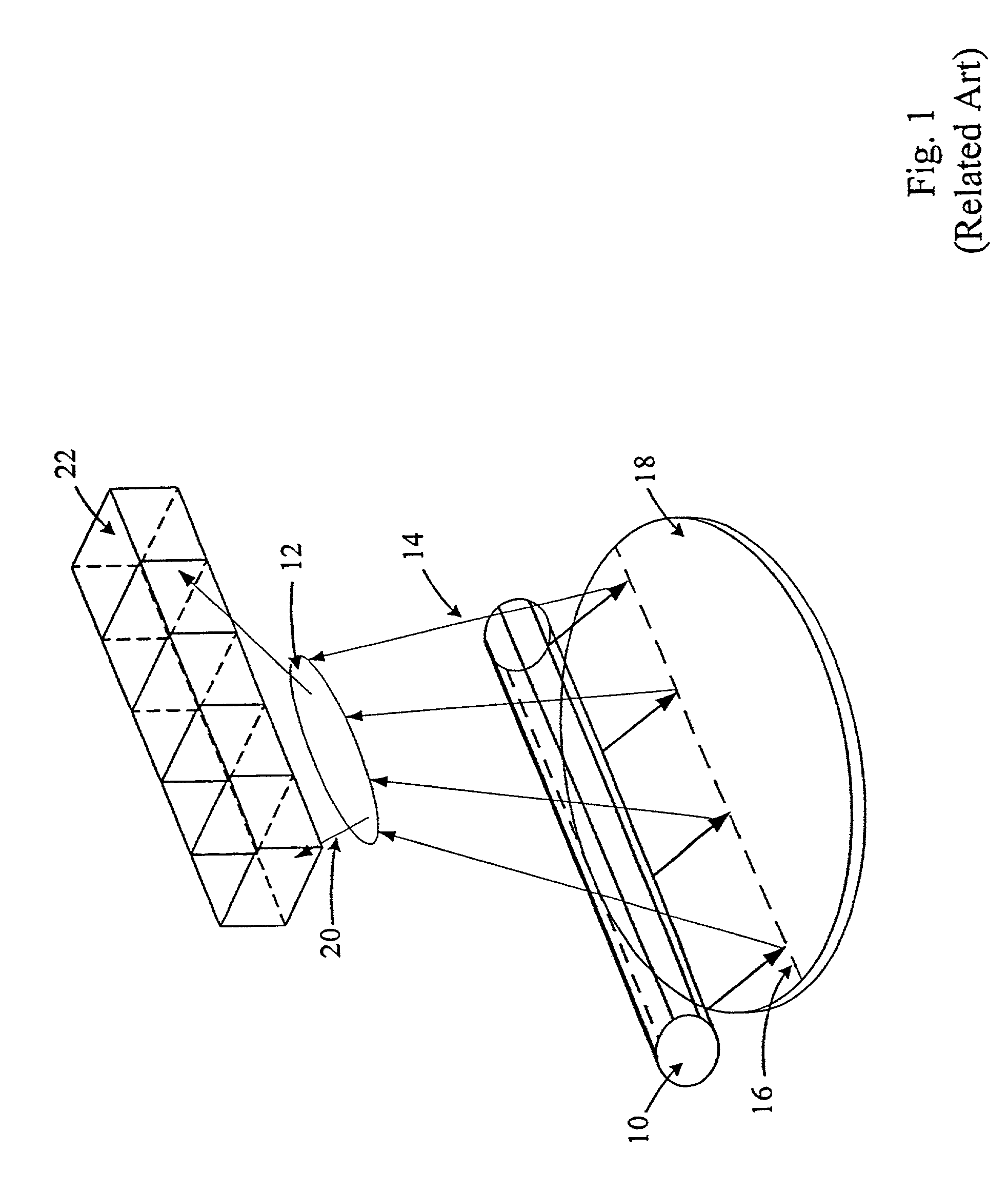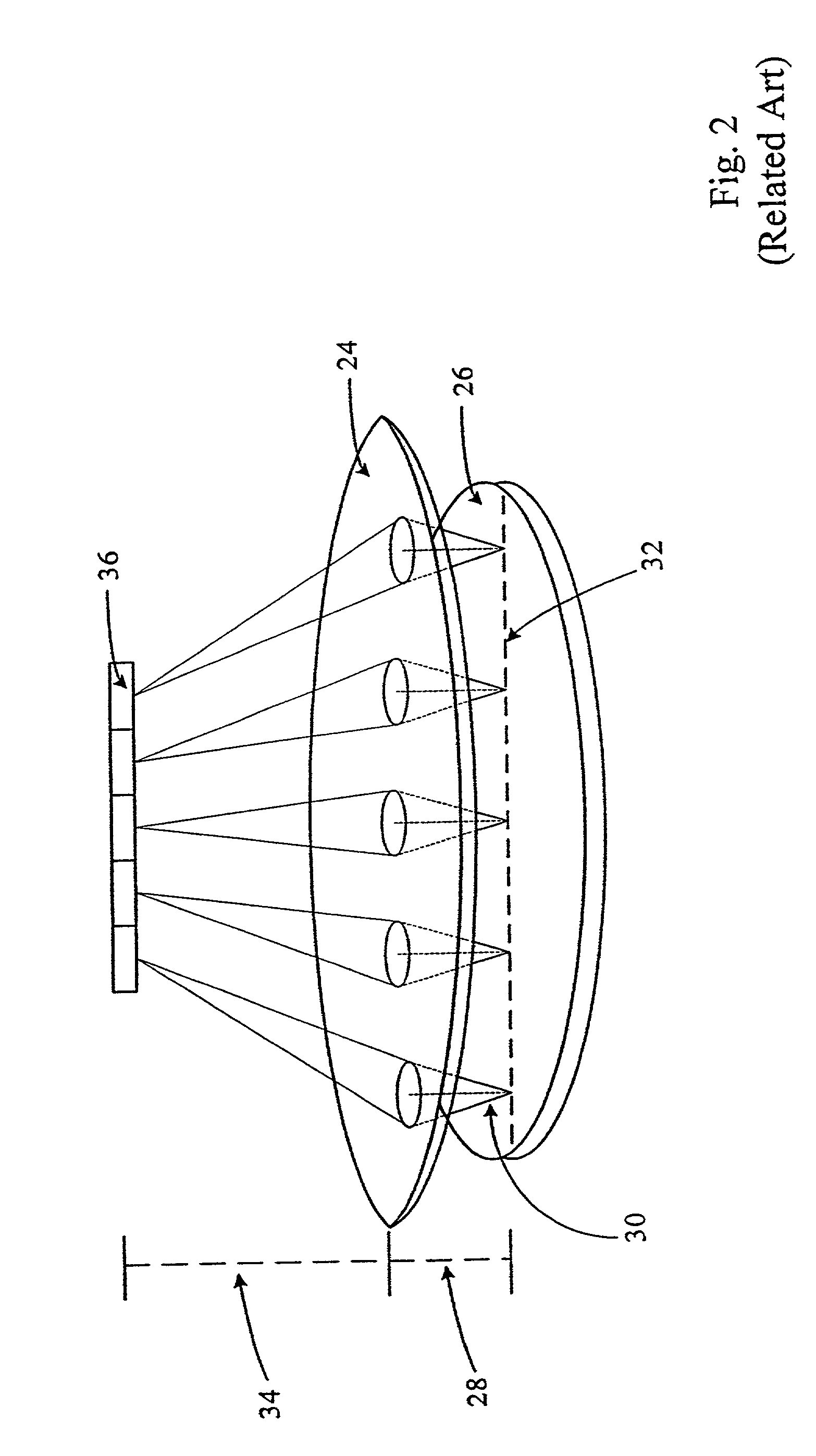Systems and methods for inspection of specimen surfaces
a technology for specimen surfaces and inspection systems, applied in the field of systems and methods for specimen surface inspection, can solve the problems of limiting the successful fabrication or yield of a semiconductor device, introducing defects such as particulate contamination and pattern defects into the semiconductor device, and limiting the use of process tools. , to achieve the effect of high illumination delivery and collection efficiency, easy integration into process tools, and increased cos
- Summary
- Abstract
- Description
- Claims
- Application Information
AI Technical Summary
Benefits of technology
Problems solved by technology
Method used
Image
Examples
Embodiment Construction
[0060]Turning now to the drawings, FIG. 4 illustrates a schematic top view of a specimen surface such as a semiconductor wafer 50 having a plurality of defects. Specimen or wafer 50 may include a plurality of dies 52 having repeatable pattern features. Alternatively, specimen 50 may be unpatterned such as a virgin wafer or a wafer prior to a first-pass lithography process. The class of specimens may include substrates typically found and / or processed in semiconductor fabrication factories. These specimens, or substrates, may be made of semiconductor or non-semiconductor materials, including but not limited to, monocrystalline silicon, silicon germanium, gallium arsenide, and glass materials such as quartz. Typically, the term “wafer” refers to substrates made of such semiconductor materials, and has also sometimes included substrates of non-semiconductor materials. The term “wafer” shall be used for these discussion purposes interchangeably with the term “specimen” though the invent...
PUM
| Property | Measurement | Unit |
|---|---|---|
| height | aaaaa | aaaaa |
| height | aaaaa | aaaaa |
| diameter | aaaaa | aaaaa |
Abstract
Description
Claims
Application Information
 Login to View More
Login to View More - R&D
- Intellectual Property
- Life Sciences
- Materials
- Tech Scout
- Unparalleled Data Quality
- Higher Quality Content
- 60% Fewer Hallucinations
Browse by: Latest US Patents, China's latest patents, Technical Efficacy Thesaurus, Application Domain, Technology Topic, Popular Technical Reports.
© 2025 PatSnap. All rights reserved.Legal|Privacy policy|Modern Slavery Act Transparency Statement|Sitemap|About US| Contact US: help@patsnap.com



